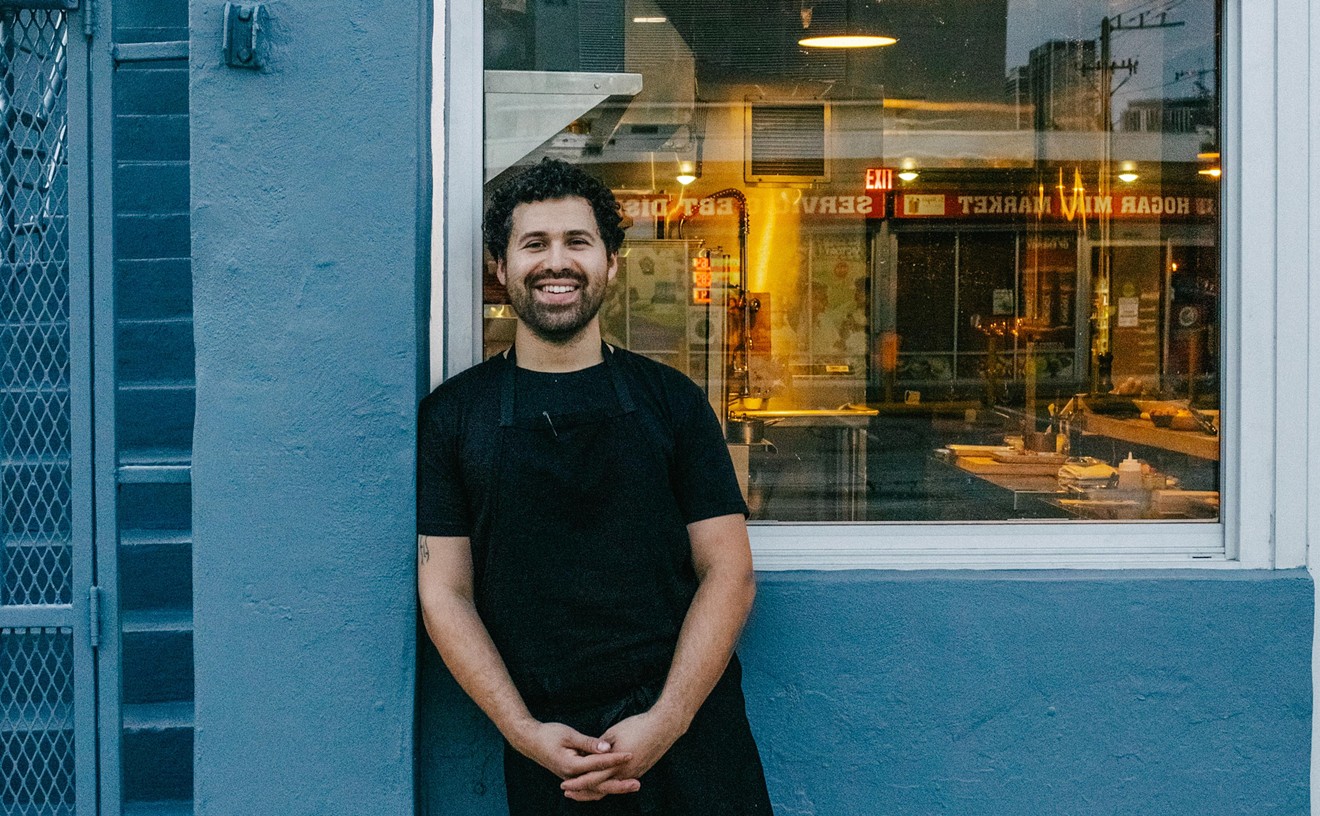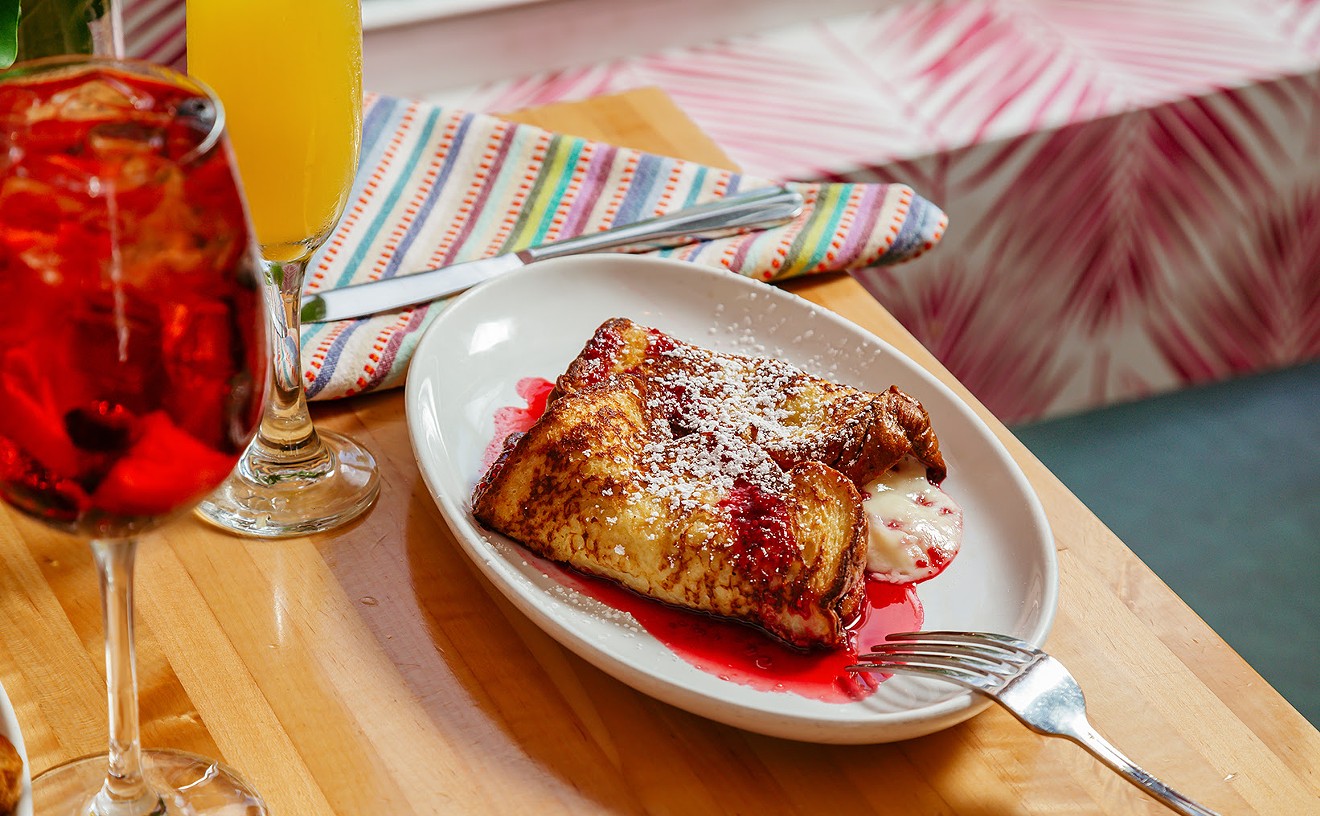Remember macadamia-crusted yellowtail snapper in mango sauce? And papaya salsa, yuca mash, and a single plantain chip rising Iwo Jima-style from the plate? Ah, the bad old days. Not that New Florida cuisine wasn't a noble concept at the start, but it reached the point where you couldn't enter a Miami eatery without being subjected to some meager paint-by-numbers mimicry of the original — or, even worse, some ineffectual cook's own take on the topical tropical. Those notions have since "jumped the snapper," so to speak, and the new New Florida cuisine is now Mediterranean. This represents a cleaner, lighter, more healthful fare than fussy fusion, but doomed to meet the same fate of ubiquity: Familiarity breeds contempt.
Of course the better the product the less contempt, and Brosia, one of the Design District's recent restaurant arrivals, serves Mediterranean cuisine agreeable enough to breed only mild annoyance — the sort one suffers when sitting through a movie whose plot has been sat through 100 times before. Boy meets girl. A drizzle of light narrative. Boy and girl end up together (even though they argue a lot). Seared salmon meets sautéed greens. A drizzle of light sauce. Diner ends up satisfied.
Brosia is the first enterprise of Bridge House Restaurants, a recently formed hospitality division of Dacra Development. Dacra has been the catalyst for much of the district's real estate revitalization, but its lack of experience in the food industry shows. On no visit was anyone on hand to greet us upon arriving, or to bid us goodnight. The pair of workers who placed plates and flatware upon our table wore countenances so glum you'd have thought they were cemetery workers lowering a body into the ground. Our waiter was sharp on one occasion, but subsequent visits brought to light a disorganized, poorly trained staff (though buspersons were on the ball). These are all symptoms of management undersight — something that crossed my mind while I was in the restroom and out of necessity drying my hands with toilet paper.
Another lapse was our being brought predinner pita chips with an ice cream scoop's worth of white bean purée — just seconds before our first course arrived. I'll take soft, freshly griddled flatbread anytime; pita chips' petrified quality makes them better suited as something to be tossed to a canine after a trick.
No such experience issues arise with chef Arthur Artiles, who between 1998 and 2005 worked at Norman Van Aken's venues in the Gables and Orlando, and at the original Chispa. His limited bill of fare here contains just seven starters and the same number of entrées, yet it still casts a net over a wide swath of the Mediterranean. Appetizers include four grilled, minced lamb skewers accompanied by chunky Greek tzatziki sauce (or Turkish, depending on your historical bent); "Moroccan-style" steamed mussels in coconut-curry broth; and "gazpacho caprese," which carries two passports but is really just the classic chilled soup with fresh mozzarella plopped on top.
Another appetizer, a shrimp-clam combo, is appropriated from the Catalan region of Spain — as evidenced by discs of chorizo sausage and a thin, sassy, sherry-tinted broth redolent of shellfish and red chilies. Unremarkable spears of toast for soaking up said liquid ascend Iwo Jima-style from the square white bowl.
The French side of the Med is reflected in a main course of roast chicken aromatically enhanced by herbes de Provence. It took some time for the bird to land on our table, yet evidently not quite long enough; it was still partially raw. When the poultry came back fully cooked, the crisp skin and herby flavors impressed. As with many of the entrées, an ample pile of mildly dressed arugula fills the plate.
Wide, eggy strands of pappardelle pasta were toothsome in tandem with juicy, buttery chunks of Maine lobster. The amount of shellfish was generous for the $24 price, perhaps to compensate for the lack of two other promised ingredients — baby fennel and fresh mint. Entrée prices are forgiving: four of them less than $20, the other three under $30. Starters, $9 to $13, represent less of a bargain.
Chef Artiles's bent is to take traditional dishes and give them a slight spin. Greek salad is tweaked into "Mediterranean salad" via upgrades of arugula, grape tomatoes, quail eggs, and orange-sherry vinaigrette. A 12-ounce grilled New York strip is paired with blue-cheese-and-onion-stuffed piquillo peppers. And crisp duck leg gets glazed with pomegranate and plated with French lentil salad laced with pomegranate vinaigrette. Rabbit stifado, with feta cheese, walnuts, and pearl onions, is the most distinctive menu item, but with apologies to those curious about this dish: I don't eat bunny.
Brosia's interior is decoratively dominated by a 25-foot mirror above leather banquette seating. On the other side of the room are glass doors opening to outdoor tables in the 4,000-square-foot Oak Plaza — so named for 150-year-old white oak trees that jut from the square to form a sparse canopy. Lofty blue-green mosaic walls and towering white columns add visual pizzazz to the piazza, but even when the restaurant is filled with diners, the energy seems to dissolve into the voluminous venue's air. I'm not one for obtrusive music while dining, but this is one place that would benefit from some live, preferably acoustic performances (are Peter, Paul, and Mary still alive?).
There are just four desserts: chocolate cake, flan, cappuccino panna cotta, and baklava, the last featuring a moist honey-nut filling wrapped in an old, rock-hard cylinder of phyllo dough — something to be tossed to a canine when he doesn't perform the trick.
After dinner, we lingered over signature sangria prepared with Malbec wine, Licor 43, brandy, Amaretto, orange juice, simple syrup, and a splash of soda (or so they say, though I couldn't discern any fizz or almond flavor). Tasty enough, but the stingiest of pours — about half a glass altogether, a quarter cup of which was fruit. Some might look at Brosia's glass as being half full. I see it as being half empty.










